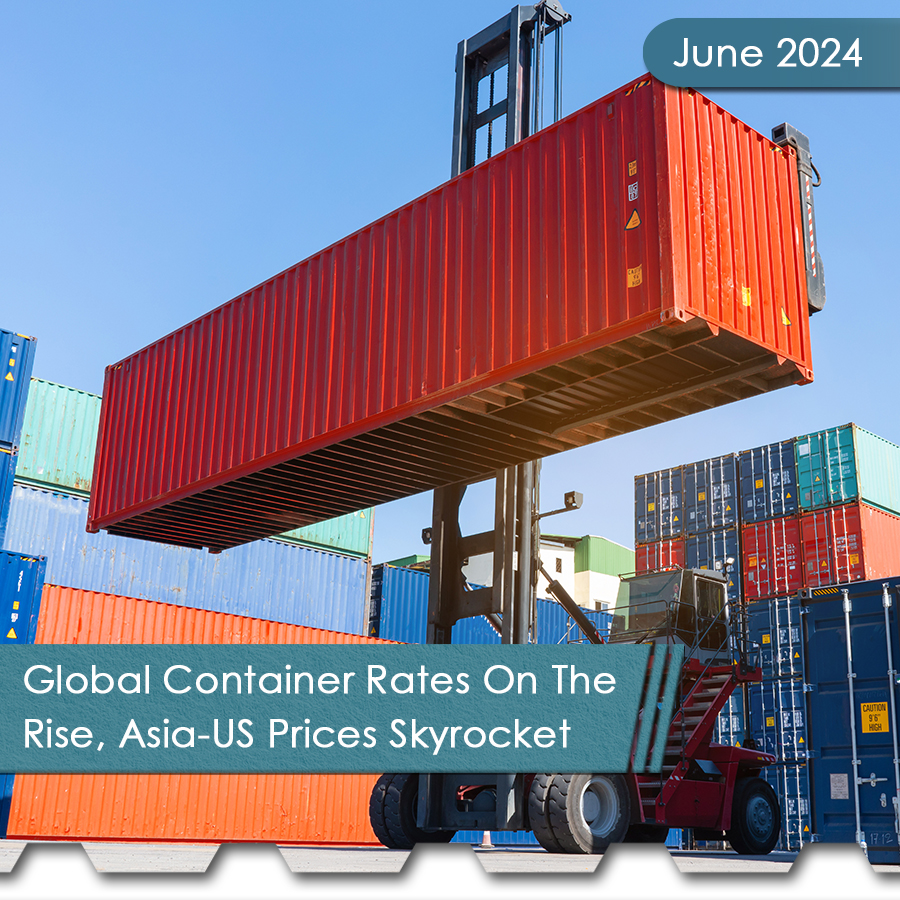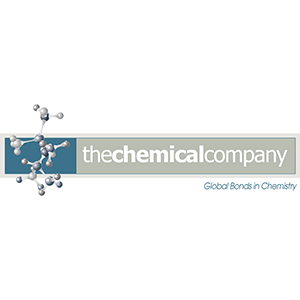Quote of the Day
“We would all like to vote for the best man, but he is never a candidate.”
Kin Hubbard
Chemical Industry News
U.S. Chemical Production Rebounds in June
The American Chemistry Council (ACC) reported that the U.S. Chemical Production Regional Index (UY.S, CPRI) went up 0.5 percent in June after a revised 0.1 percent fall in May and flat growth for the month of April. Chemical production by segment was mixed over the same period. Output of pesticides, synthetic rubber, chlor-alkali, plastic resins, and pharmaceuticals experienced gains. However, the gains were offset by the production of organic chemicals, adhesives, acids, phosphates, sulfates, manufactured fibers, other specialties, and fertilizers, all of which, suffered declines. Coatings production remained flat, showing no change.
Click Here To Read The Full Story
The U.S. Environmental Protection Agency (EPA) was sued by The Environmental Justice Health Alliance for Chemical Policy Reform (EIHA) and People Concerned About Chemical Safety (PCACS) for allegedly failing to stop the spill of hazardous substances from industrial sources.
The groups claimed in their lawsuit filed with the U.S. District Court for the Southern District of New York that Congress mandated the EPA to issue regulations as soon as possible in 1972 and the agency failed to do so.
University of Notre Dame researchers have identified a new polymerization mechanism to synthesize hyper-branched polymers.
LSB Industries is getting ready to complete and commission a nitric acid plant and concentrator as well as an ammonia plant at its industrial complex in El Dorado, Arkansas. The company is on schedule to start operations of the nitric acid plant and concentrator by the end of the third quarter. The ammonia plant is planned to be commissioned in the first quarter of 2016. The project was first estimated to cost between $495m and $520m, but latest figures went up to $575m.
U.S.-based G2X Energy has begun mobilization works for its methanol production plant in Lake Charles, Louisiana. The company has secured the necessary state and federal permits required to start construction and is currently doing critical studies and working on local building permits. To manage the construction project, G2X is opening a new office in the region.
Bayer CropScience and Evonik Industries have partnered and invested over $200m to construct two crop protection chemical manufacturing plants in Mobile, Alabama. The production facilities will be located at Evonik’s manufacturing complex in Theodore Industrial Park, Mobile County.
Altamont Capital Partners a U.S.-based private equity firm, has provided financing for Douglas Products to acquire Dow AgroSciences’ businesses.
Earlier this year, Douglas signed a definitive agreement with Dow to acquire its Vikane and ProFume gas fumigant businesses. Altamont has teamed with Douglas’ owners, Bill Fuller and Wes Long, who will have a majority stake in the acquisition.
San Antonio, TX consulting and marketing research firm Frost & Sullivan predict Mexican petrochemical market to reach $1.6bn in 2020. The report, titled Mexico Petrochemical Market Opportunity Analysis, said that the acrylonitrile-butadiene-styrene (ABS) and styrene butadiene rubber (SBR) segment reported its highest revenues last year. The poly butylene terephthalate (PBT) and styrene-butadiene-styrene (SBS) markets are estimated to grow between 2014 and 2020 at compound annual growth rates (CAGR) of 11.3% and 8.7% respectively.
U.S. Petrochemical producers are not fazed by oil price declines. Although oil prices imploded in 2014, experts predict they will decline even further before recovering later in 2015. The falling prices challenge the natural-gas-based U.S. petrochemical industry, but producers are expected to remain competitive with the rest of the world.
Specialty chemicals are expected to grow somewhat faster than the overall economy this year with cosmetic ingredients and catalysts for plastics bringing bright spots to the sales effort. Nonetheless, specialty chemicals used for extracting oil and gas may not fare as well in the face of the current energy glut.
The paint and construction materials market is expected to expand in the U.S. this year as the economy gains momentum. However, construction abroad is sliding as growth in China falters, Europe continues to struggle, and parts of Latin America are still in recession.
The American Chemistry Council (ACC) is cautiously optimistic about the growth of the U.S. housing industry, where every building start represents approximately $15,000 in chemical sales. Interest rates are still at historic lows, although finances among first-time homebuyers remain weak. The ACC predicts new housing starts will rise by 20% in 2015 when compared to the previous year. Overall construction, including commercial buildings and infrastructure is expected to rise around 6.7% this year according to the trade association.

Oil & Gas News
Saudi Arabia’s Sabic Considers U.S. Shale Gas Investments
A Bloomberg article said that according to acting Chief Executive Officer Yousef al Benyan, Saudi Basic Industries Corp., the world’s second-largest chemical manufacturer, plans to expand their investment program in the U.S. by investing in U.S. shale gas projects through joint ventures.
Al-Benyan said in an interview in Riyadh that Sabic, as the company is known, signed an agreement with Enterprise products Partners L.P. of Houston, Texas to get shale gas. He went on to say that the company may use the feedstock in the U.S. or export it abroad to other countries like the U.K. Sabic has converted crackers at U.K. plants to use shale gas as feedstock to produce olefins and their derivatives at more competitive prices.
“The main areas in the U.S. we are looking to invest in are the northeast and the south as they fit our overall expectations including government support, labor laws and unions,” al-Benyan said. “At this point we are not looking to acquire any U.S. companies.”
Sabic bought General Electric Co.’s plastics unit for $11.6 billion in 2007, said in April that it plans to expand in China as well as the U.S. because growth in Saudi Arabia is difficult for the company due to the shortage of gas. The Marcellus shale formation that is spread across Pennsylvania, West Virginia and Ohio is the country’s biggest natural gas producer, with output rising more than 14-fold since January of 2007.
Click Here For More On Shales Gas Investments
Crude oil fell back into a bear market erasing $100 billion from disappointed U.S. shale drillers that were hoping for higher prices. The Bloomberg Intelligence North America Independent Explorers and Producers Index said that West Texas Intermediate, the benchmark U.S. contract, fell 22 percent since June 10 to $48.14 a barrel.
Crude’s recovery quickly withered amid the worldwide glut that shows no signs of easing. U.S. production is near the highest level in forty years. Saudi Arabia and Iraq’s output also surged to record levels, and Iran is set to resume exports after reaching a nuclear agreement with world powers.
“The commodity price is telling the U.S. shale sector to shrink,” Subash Chandra, an oil analyst at Guggenheim Securities LLC in New York was quoted as saying. “Barrels from the U.S. are on a collision course with barrels coming out of Iran, Saudi Arabia and elsewhere.”
Saudi Arabia could be bankrupt by end of the decade according to an article in Peak Oil News. The troubled country has had to borrow billions over the past year. Saudi Arabia was among the richest nations on the planet before it had to sell more that $4 billion in bonds to maintain levels of spending on public works as well as finance the Yemen war. According to Falad al-Mubarak, head of the Saudi Arabian Monetary Agency (the nation’s equivalent to the U.S. Federal Reserve), the Saudi government has also had to draw on its reserves of foreign currency to stay afloat. Mubarak predicted “an increase in borrowing” in the face of a projected $130 billion deficit. The primary cause of the predicament is the dramatic drop in the price of crude oil. From a peak of $125 a barrel in February 2011, the price for a barrel has currently fallen to under $50. Experts predict that it may be years before petroleum prices recover.
A Reuters article by John Kemp claims that U.S. oil imports are on the rise as the West Texas Intermediate (WTI) contango deepens. Futures prices are making the storage of surplus crude in the U.S. increasingly profitable. This coincides with a strong period of oil imports and a continuing buildup of already burgeoning stockpiles.
WTI crude futures suggest that the market is paying more than 61 cents per month to cover financing costs and storing oil at the Cushing deliver hub during the fourth quarter of 2015.
The WTI contango has tripled for the fourth quarter of 2015 from less that 20 cents per month at the beginning of June.
Baker Hughes, the largest suppliers of oilfield services in the world says that U.S. oil drillers are adding rigs despite the collapse of crude prices. U.S. oil producers recently added 21 oil rigs in one week, the most in more than a year, which suggests that drillers are moving more aggressively than originally expected. The total rig count is now up to 659, the highest since late May according to Baker Hughes in a Reuters news agency report.
A drop in oil prices this month will more than likely be short-term and will not deter OPEC from adhering to its practice of keeping output high to defend market share, according to delegates from Gulf OPEC members, and other nations.
Failing Chinese stock markets and the Greek debt debacle have caused concern about demand. The Iranian nuclear deal could easily lead to higher oil exports from the Islamic Republic. Benchmark Brent crude, is trading for less than $57 a barrel, has fallen more than 10 percent in July alone.
OPEC made a major policy shift last November against cutting its production target of 30 million barrels per day (bpd) to uphold prices, seeking instead to defend market share against U.S. shale oil and other competitive sources. The group reconfirmed its support of the strategy at a meeting in June.
A Reuters report by Alex Lawler said that Iraq’s southern oil exports are heading for another record in July. The country’s southern oil exports have risen above 3.0 million barrels per day (bpd) so far in July. According to loading data and an industry source, shipments from OPEC’s second-largest producer are on target for a monthly record. The Iraqi boost indicates a continuation of high output from the Organization of the Petroleum Exporting Countries that are focusing on protecting market share as opposed to curbing supply to support prices.
Economy
Commodity Collapse Maintains Momentum During Worst Week of 2015
A Bloomberg report by Luzi-Ann Javier said that the commodity collapse that sent gold spiraling down to a five-year low and pulled crude oil into a bear market is not showing any indications of abating.
The Bloomberg Commodity Index dropped 4.3 percent, the most since November and extended a fall to a 13-year low. Shares of Freeport-McMoRan Inc., the largest publicly traded copper producer, are braced for the worst week since 2011 as the metal fell to a six-year low in New York. Brent oil is headed for the longest run of weekly declines since January.
New evidence of the slowdown in China the world’s largest consumer of metals, grains and energy, helped prices extend losses last week. The Bloomberg commodity measure has fallen approximately 28 percent over the past year amid expanding gluts. Investors continue to hold a net-long positing, or bets on a price increase, across raw materials. They increase those bets in each of the past four weeks, leaving bulls vulnerable to endure the agony of July’s rout.
Further Information On The Story
A Wall Street Daily report said that the Canadian economy has effectively entered a recession. Last week, the Bank of Canada (BoC) “unexpectedly” slashed the benchmark lending rate to 0.5% and cut its economic growth predictions for 2015. The BoC noted, “Real GDP is now projected to have contracted modestly in the first half of the year.” It is clear that the collapse of commodities prices is having a more dramatic impact than many expected.
According to the Fiscal Times, the cost of food is going to rise after several years of modest increases and relatively low prices. Overall prices are expected to rise approximately 3 percent this year according to a recent U.S. Department of Agriculture report. That could have a profound effect on consumers, considering that Americans already spend 10 percent of their income on food.
Ronald Plain, a professor of agricultural economics at the University of Missouri said that, “Consumers are just going to have to budget more money for food. Eating isn’t really something that people can give up, and there’s not much you can do about the prices.”
A U.S. Government report said that the number of Americans filing new applications for unemployment benefits dropped to is lowest level in over 41-1/2 years, implying that the labor market maintained a solid pace of job growth throughout July. Other data supported an upbeat assessment of the economy. The bullish jobs picture, along with a robust housing market brings the Federal Reserve a step closer to raising interest rates this year.
However, detractors of the government reports touting robust markets, low unemployment, and strong job creations say the reports are misleading. The jobs being created are mostly low paying, and more Americans are working two and three part-time jobs just to make ends meet.
According to an ABC News study, Americans work more than anyone in the industrialized world. More than the English, French, Germans and Norwegians, and recently, even more than the Japanese. Americans also take fewer vacations work longer days, and retire later; not because they like work, but because they find it necessary if they want to keep their “heads above water.”
Is China’s ailing economy contagious? Will it infect the world while it struggles to recover? China is the second largest economy on the planet. Everyone fears that with its economy in a slump, China will pull the rest of the world down with it, and that includes the U.S. That could be a very frightening scenario when considering how slowly the global economy is currently growing and how few resources are available to any country to jump start business.
Make no mistake; the world economy is fragile. “We need all the growth we can get. A slowdown in China will not help,” said David Joy, chief market strategist at Ameriprise Financial.
Nonetheless, and indicator of U.S. economic activity surged in June, and widely surpassed analyst expectations by showing signs of a more robust economic outlook.
The Conference Board, a global, independent business membership and research association working in the public interest said that its Leading Economic Index rose 0.6 percent to 123.6 in June following a revised figure of an 0.8 percent increase in May and a 0.6 percent increase in April.
The leading indicators index forecast by analysts polled by Thomson Reuters inched up 0.2 percent in June. Although reports by respected analysts and financial experts paint a picture of sustained economic stability and growth, the average American still feels as if they are struggling to stay afloat and do not feel as if they are getting ahead.






